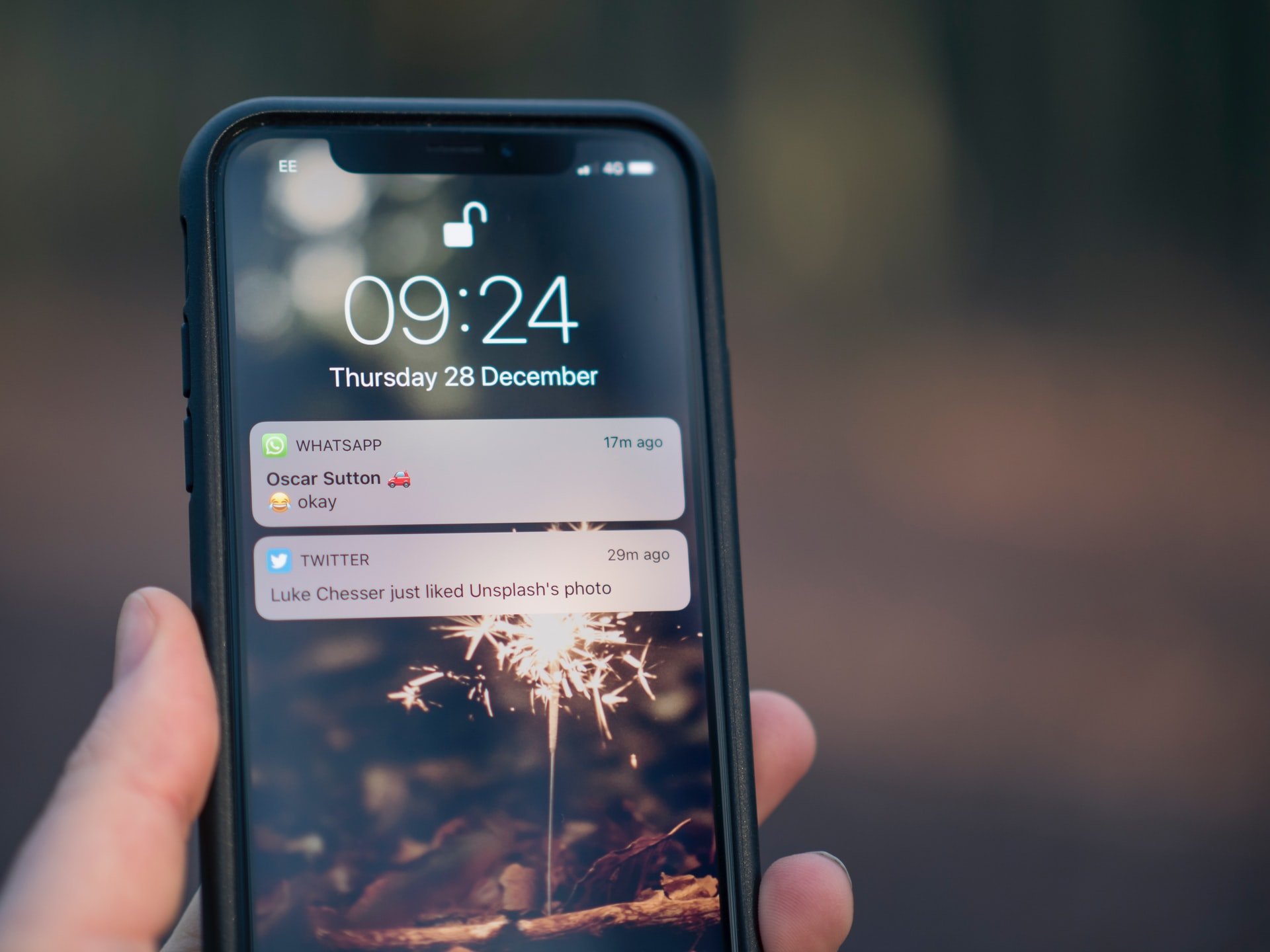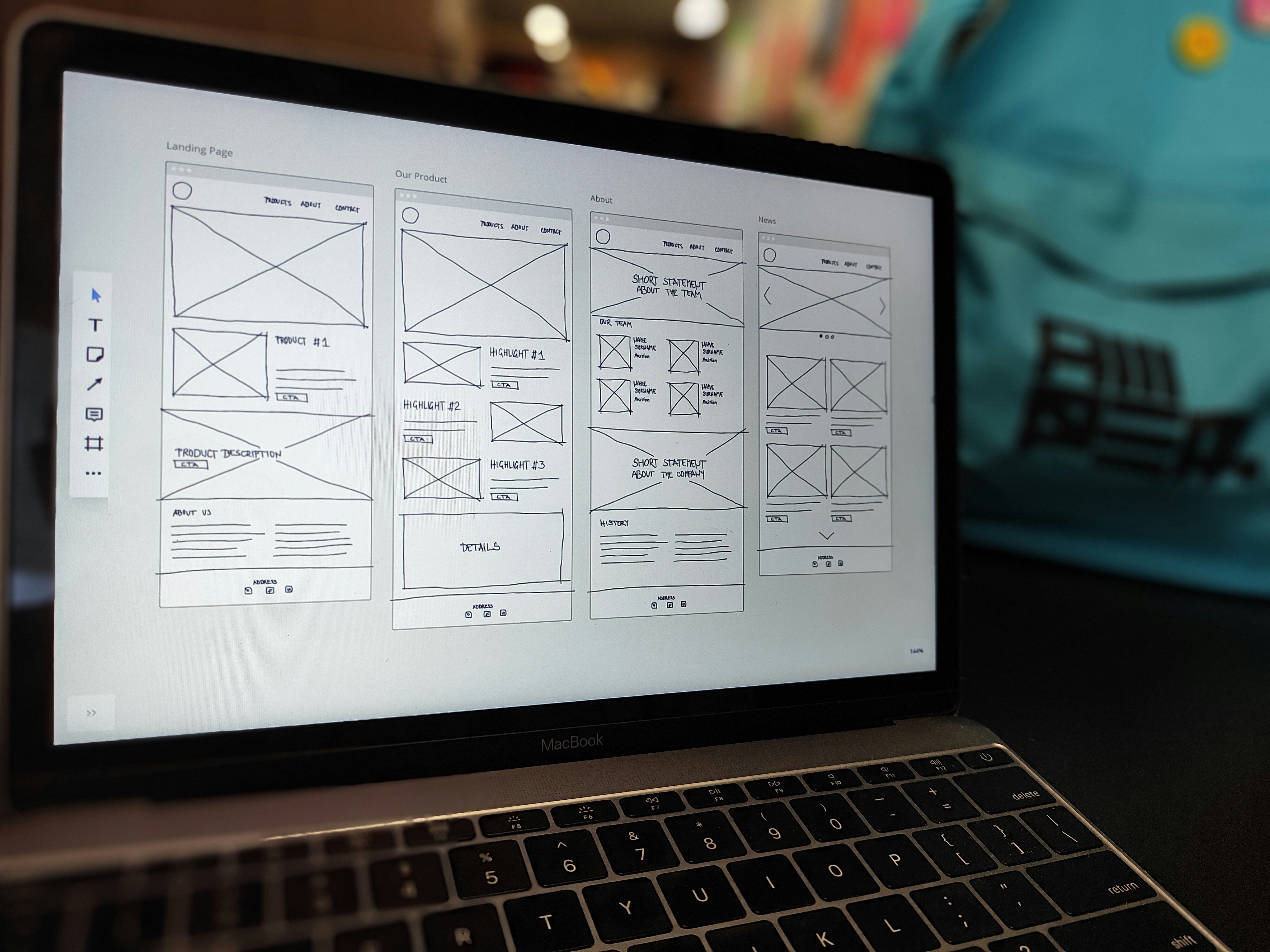The Ultimate Guide to App Push Notifications
Push notifications are a valuable tool for engaging users and keeping them coming back to your app. They’re an ideal way to stay top-of-mind with...
9 min read
Written by Keith Shields, Aug 23, 2021

Push notifications can skyrocket your business...or sink it. These little pop-ups hold incredible power to drive engagement and boost revenue. But too frequent, too generic, or at the wrong time, and they'll backfire. Learn the secrets that turn these tiny alerts into customer magnets.
A push notification is a clickable pop-up message. It appears in a user’s browser on any device as a quick communication tool. Push notifications can include a link within the message. Links help direct users to your website, app, or more content. Notifications can also include emojis. The aim of a push notification is to be as brief as possible while communicating your message. Push notifications can increase user retention, repeat visits, and re-engagement.
There are two main types of app notifications—push notifications and in-app notifications. Push notifications are external, meaning they trigger on your device, even if you’re not using the app. Duolingo nudging you to hop back into your Spanish lessons is an example of a push notification.
In-app notifications stay in the app itself. You can think of these as anything that might show up in your notification “tray” of the app. This could include new friend suggestions on a social app. Another example might be a notification of a new expense to categorize in your budgeting app.
A possible third notification category of notifications is email notifications. For example, when you place an order in the Amazon app, you might also trigger an order confirmation email.
The ability to opt in and out of app push notifications keeps the user in complete control of the notifications they receive. Push notifications are different from text messages in this way. Users have no control over receiving texts. The opt-in message is the first you’ll send a user, so make it count!
Communicate the value of your push notifications. Time your opt-in message appropriately for the greatest chance of approval. You have the option to show it when a user first opens the app or after they have engaged for some time. (We recommend showing it after you have demonstrated value.)
A well-crafted message will convince users they have something to gain by receiving push messages. Those gains may look like app updates, special offers, or messages. Reach out with a persuasive and personal message from the start, articulating the benefits. Ease objections by letting users know that they can opt out at any time.
Effective push notifications can improve engagement levels and loyalty, but they aren’t for every message. Push notifications are best for time-sensitive content. Time-sensitive content includes offers and promotions, shipment status, or mentions in social apps.
Messages with general updates or announcing new blog posts are better conveyed via email. Always share quality and relevant content that users will welcome. Don’t use aggressive sales tactics in your push notifications that may turn off users. Always keep in mind how easy it is to opt out.
There are a lot of different types of push notifications. Each varies in how it works and when it’s used. Here are some of the most common push notifications.
You can use push notifications to keep users informed about your app. For example, you can tell them about changes your app may be implementing. You can also provide notifications about your company’s new offerings. Updates make great push notifications if you want to update users on industry trends or changes. Remember though, long or complex info isn't well-suited to push notifications.
Send reminders to your users so they don’t miss out on opportunities. You might want to consider a reminder notification if the success of your app relies on daily use. You can also remind users to get the most out of their app experience. For example, you can tell them to complete their profile, log their daily check-in, or check the portal. Reminder notifications are a great way to build loyalty. And everyone is busy, so reminders can be very helpful for users.
Filter notifications based on the user’s location to ensure you provide the most relevant information. You do need to request permission for your app to track their location, of course, but it’s a great value-add for users. Filter notifications allow users to get info relevant to their geography. Plus, these updates can make users feel like you are catering to them specifically. It’s personal touches like these that build brand loyalty and keep long-term users.
This type of notification is a great one to consider for e-commerce brands. It’s specific to apps with a commerce and shopping element. If you sell something on your app, you can retarget customers who failed to complete their purchase. This usually means they’ve left something in their online shopping cart. A push notification reminds them of their shopping experience and encourages them to go back to the app. If you’re getting high traffic and low conversions, this might be the push notification to target.
This type of push notification alerts users of sales, giveaways, and exclusive offers. Like the previous type, promotional notifications nudge users to take the desired action. This is also more likely to occur if there is a time aspect to the promotion. For example, a sale that ends at midnight, or a discount code that can only be used on the user's birthday.
You can use these push notifications to update users about the status of their transactions. This is particularly useful for selling products, whether it be physical items or software. Once people make purchases, they want to ensure their money is properly received. They also want status updates on their purchases, especially if shipping or delivery is involved.
If users haven’t been active on your app in a while, you can send a nudge notification. It might mention that other users on the app miss them. At best, it will invite them back onto the app, without feeling ashamed or annoyed. If you go this route, be thoughtful about when and how often to send nudge notifications. You want to hit that perfect pitch between motivating and aggravating.
Push notifications can be very effective, but only if they’re done well. If you want great results, avoid these common mistakes.
Don’t overdo it. Your push notifications stop packing a punch when you send them all the time. Use them sparingly and thoughtfully so that users actually notice them.
A push notification is meant to be a quick and simple read. Long, verbose notifications leave users bored and confused. Get to the point and pique interest as fast as you can to drive action.
The best push notifications are personalized. Users are way more likely to click your notification if it’s customized to them. Broad-sweeping information and general updates are best reserved for in-app notifications.
Rich media, like gifs and photos, are awesome at grabbing attention. Just remember, they add complexity. Some phones don’t display rich-media push notifications well. So, they’re not always as impactful as alerts that use just text.
If you’re looking to improve your use of push notifications, focus on the user experience. Before you send a push notification, ask yourself if it adds value to the user. If you’re unsure what value it offers, then don’t send it. It’s important to remember that users can stop notifications at any time. Use them wisely.
Also, consider the call to action. Are you asking users to do something they will want to do? Can users connect the action to value? If they can’t easily make the connection, they will be less likely to take action. Or worse, they might even unsubscribe from push notifications altogether.
There are a lot of great examples of companies effectively using push notifications. Examples include but are not limited to:
The super popular Starbucks app notifies its users of free treats and coffee whenever they’re available. These push notifications start when users first sign up. Users are also notified when they earn points or receive special offers from app use.
Lots of Duolingo users rely on push notifications to maintain their daily language practice. The app nudges users to use the app each day, as well as encourages them to compete in games and challenges.
Apps like Kayak and other travel services provide alerts when the prices drop on airfare and hotels. This helps users get the best deals possible and helps the business function better. These push notifications are especially helpful for timely discounts that need users’ immediate attention.
Makeup and skincare stores like Sephora use push notifications for promotions and abandoned carts. These kinds of reminders to encourage sales are also popular for other shopping apps like Crate & Barrel, Nordstrom, and others.
Google Photos and other image-based apps will often send push notifications to users. These notifications usually remind users of past adventures and memories, encouraging them to open the app.
Daily news publishing and distribution apps like Apple News or The New York Times app send daily push notifications. These usually include roundups of news stories or breaking news alerts. These updates encourage users to stay informed and to open the app and read.
Social media apps like Instagram and Pinterest send push notifications to users about app activity. These notifications might inform users of acquiring new followers, comments, saves, and more content interactions.
Exercise-based apps like Peloton send timely reminders to users on workouts and progress. This helps increase engagement and keeps users coming to the app to keep up their fitness goals.
You don’t have to look very far to find big brands using push notifications well. But, that doesn’t mean they’ve cornered the market on this powerful tool. Push notifications can benefit businesses of all sizes. Here are a few examples of ways small businesses might adopt a push notification strategy to keep users and boost sales.
With push notifications, local bakeries can keep tasty baked goods from going to waste. A location-based promotional push notification just before closing time could be a great way to boost sales and reduce waste.
Push notifications can allow salons and massage parlors to attract repeat customers and decrease no-shows. Businesses like these might consider triggering a nudge notification when a certain amount of time has passed since the last appointment. Alternatively, use push notifications for time-sensitive updates, like appointment reminders.
Half the battle of getting fit is just showing up. Push notifications are a perfect solution for local fitness businesses looking to help their patrons stick to their goals. Timely encouragement and fun incentives go hand-in-hand with push notifications.
As with any method of communication with users, there are advantages and disadvantages to using push notifications. You’ll want to consider these before using them.
It’s okay if it takes some time to land on the best push notification strategy for your app. What works for one company won’t necessarily be a silver bullet for your brand.
Luckily, experimenting with your push notification strategy doesn’t need to be complicated. A simple A/B test approach is a great place to start. This method allows you to gain some data quickly without a heavy lift.
You’ll want to start by identifying the variable you’d like to test. For example, maybe you’re curious about what message length or style resonates best with your audience. Or maybe, you want to pit two different types of promotions against each other and see which gets the best response. Anything from the time of day or trigger to the message content, tone, and style is fair game.
Then, divide your users into equal halves and send one version to one half and one version to the other. Be sure to test only one variable at a time. Testing too many in a single A/B test will muddy the waters and leave you with data that’s not very actionable.
Instead, if you want to hone in on several different factors, run several A/B tests. Taken together, the results should offer some guidance on which approach to keep and which to ditch.
As with A/B testing, you’ll want to set a goal before you start. Decide what metrics matter most to your app and your business. For example, is it app users? Active users? Paid subscribers? Revenue? All of the above?
Once you know what you’re targeting, then you can hone in on the best markers of success. Some possible examples might be:
Note that what’s good and what’s not depends somewhat on your industry. For example, users on ride-sharing apps might be more likely to tap a push notification than, say, a news app user.
Useful on their own, push notifications are even more effective when considered within the context of your broader marketing strategy. Just like emails, social, and web content, you can think of push notifications as their own media channel.
This means, you can and should use push notifications to make progress toward bigger marketing goals. For example, if converting free users to paid subscriptions is your focus this quarter, leverage push notifications toward that end. You can send out promotions during times users typically open your app. Or, craft custom messages to users who might benefit from premium features.
Including push notifications in your overall marketing plan ensures your customers have a cohesive brand experience. The truth is when push notifications are not looped into all your other marketing, you run the risk of sending conflicting info or off-brand notifications.
Start with a solid understanding of your users and what they value. Then, consider adding push notifications to your app’s marketing repertoire. When you provide high-value content in your push notifications and know what to do (and what not to do!), it’s a great way to increase your app’s success.
Considering creating an app? Reach out to learn more about how we help clients build successful apps. Get in touch.
You might also like:
Subscribe to our newsletter.

Push notifications are a valuable tool for engaging users and keeping them coming back to your app. They’re an ideal way to stay top-of-mind with...

Bad design leaves money on the table. Don’t believe it? Consider this.

We’ve previously written about successful tips on how to wireframe your app and how to figure out the least and crucial amount of things you need to...
Post
Share